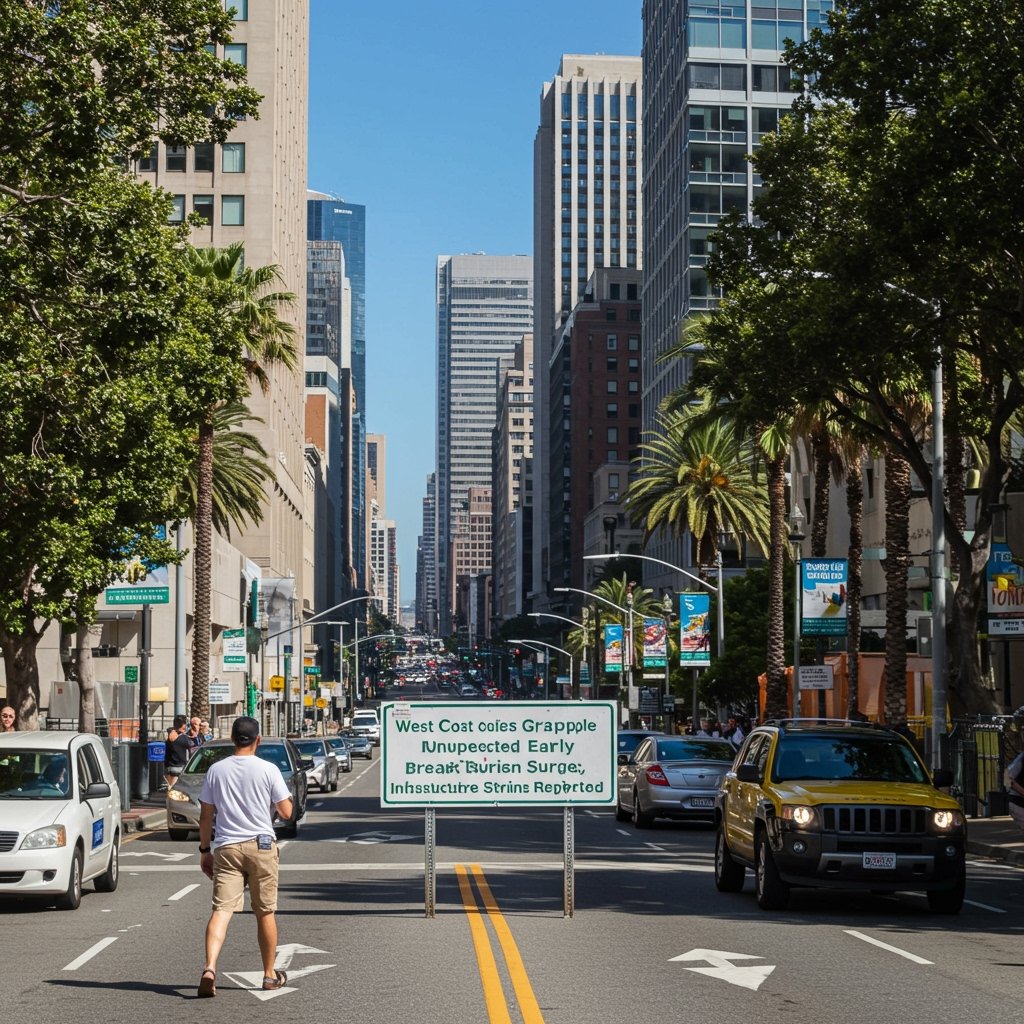West Coast Tourism Boom: Early Spring Break Arrival Creates Pressure
Major metropolitan areas along the West Coast of the United States, including Seattle, San Francisco, and Los Angeles, have experienced a significant and largely unanticipated surge in tourism during the initial wave of Spring Break travelers in late March 2025. This early influx of visitors has prompted immediate concern among city officials and local infrastructure managers, highlighting potential vulnerabilities as the peak travel season approaches.
Data released by regional tourism promotion agencies confirms the notable uptick in visitor numbers. For instance, reports from SF Travel, San Francisco’s official destination marketing organization, indicate that visitor numbers in the city were up by approximately 18% compared to the same period last year. This substantial increase is being mirrored, though specific percentage data varies, in other key West Coast destinations like Seattle and Los Angeles.
The impact of this early surge has been particularly felt at iconic landmarks and popular tourist attractions. In Seattle, the historic Pike Place Market has reported noticeably higher foot traffic for the end of March than typically observed before the full commencement of Spring Break. Similarly, in Southern California, the Santa Monica Pier and surrounding areas in Los Angeles have seen crowds more characteristic of mid-April or May, suggesting a significant number of travelers initiated their Spring Break activities earlier in the year.
The sheer volume of early arrivals has reportedly strained critical public services and infrastructure. Public transportation systems in these densely populated urban centers have experienced increased ridership, leading to more crowded buses and trains, and in some cases, minor delays due to the unexpected demand. Parks and public recreational areas, typically less crowded in late March, have also seen their park capacities tested by the higher number of visitors, posing challenges for maintenance and public safety.
Infrastructure Readiness and Resource Allocation Under Scrutiny
The swift and significant increase in visitor traffic has not gone unnoticed by municipal governments. In response to the reported strains, city officials across Seattle, San Francisco, and Los Angeles have reportedly initiated urgent internal discussions on infrastructure readiness and resource allocation. These conversations are focused on assessing the current capacity of public services and identifying potential resource shortfalls should the trend continue or intensify.
The discussions are said to involve departments responsible for transportation, public works, parks and recreation, and potentially emergency services. The goal is to quickly evaluate existing plans and contingency measures designed to handle typical peak season loads, and to determine if adjustments or accelerated actions are necessary to accommodate the earlier-than-expected tourist volume. Officials are reportedly examining budgets and staffing levels to ascertain if additional resources can be deployed to areas experiencing the most significant pressure.
Growing Concerns Ahead of Peak Season
A primary concern highlighted in the internal city discussions is the potential for exacerbated challenges as the main Spring Break period approaches in the coming weeks. The increased traffic congestion already being observed on major arterial routes and near popular attractions is expected to worsen significantly when the majority of schools and universities are on break. This could impact not only tourist mobility but also daily commutes for residents and local commerce.
Furthermore, waste management challenges have been raised as a critical concern. Higher visitor numbers translate directly to increased litter and waste generation in public spaces, parks, and transit hubs. City sanitation departments are reportedly assessing their capacity to handle this additional load, particularly given the earlier start to the busy period. Ensuring timely and efficient waste collection and disposal is vital for maintaining public hygiene and the aesthetic appeal of tourist areas.
The early surge serves as a critical test for urban infrastructure designed to handle seasonal peaks. While tourism is a vital component of the economic health of these West Coast cities, the current situation underscores the need for dynamic planning and potentially enhanced investment in public services that can adapt to fluctuating demand, especially in light of changing travel patterns.
City officials are expected to continue their evaluations and may soon announce specific measures or public advisories related to transportation, parking, and visitor behavior to help mitigate the impacts of the ongoing and anticipated high tourism volume throughout the Spring Break period.



















